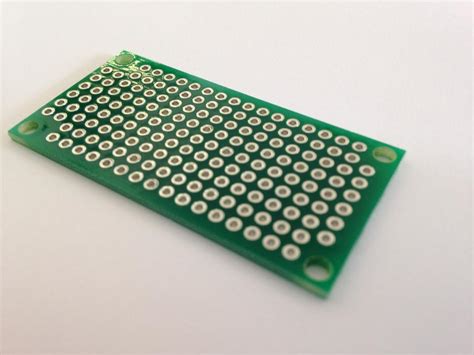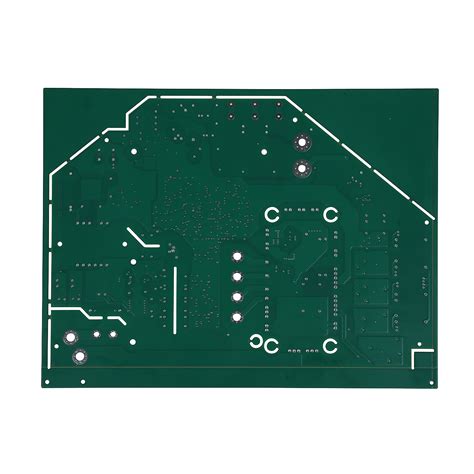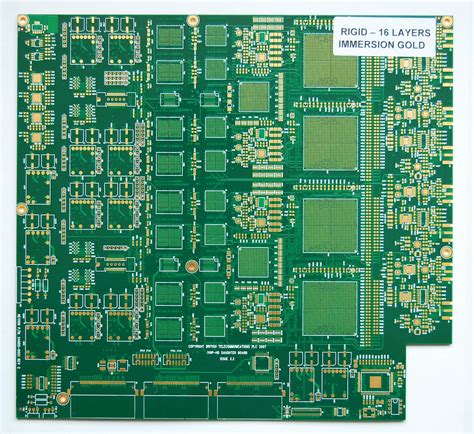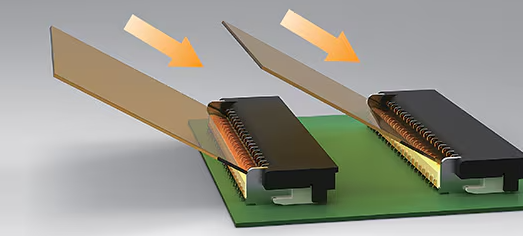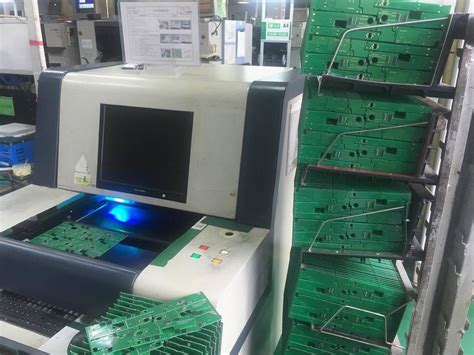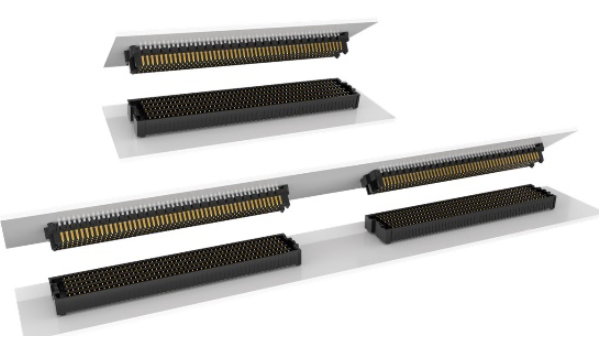High-speed PCB anti-interference design based on DSP
Introduction
With the widespread application of DSP (digital signal processor), the design of high-speed signal processing PCB board based on DSP is particularly important. In a DSP system, the operating frequency of DSP microprocessor can be as high as hundreds of MHz, and its reset line, interrupt line and control line, integrated circuit switch, high-precision A/D conversion circuit, and circuit containing weak analog signal are very susceptible to interference; so anti-interference design is very important for designing and developing a stable and reliable DSP system.
Interference is the interference energy that puts the receiver in an undesirable state.
There are two types of interference: direct (through conductors, common impedance coupling, etc.) and indirect (through crosstalk or radiation coupling). Many electrical emission sources, such as light, motors and fluorescent lamps, can cause interference, and electromagnetic interference EMI can have three necessary ways to produce an impact, namely interference source, propagation path and interference receptor. Only one of them needs to be cut off to solve the electromagnetic interference problem.
1 Analysis of interference generation in DSP system
In order to make a stable and reliable DSP system, interference must be eliminated from all aspects. Even if it cannot be completely eliminated, it should be minimized as much as possible. For DSP systems, the main interference comes from the following aspects:
① Input and output channel interference.
Refers to interference entering the system through the forward channel and the backward channel. For example, in the data acquisition link of the DSP system, interference is superimposed on the signal through the sensor, which increases the error of data acquisition. In the output link, interference can increase the error of the output data, or even completely wrong, causing the system to crash. Optocouplers can be used reasonably to reduce input and output channel interference. For the interference of sensors and DSP main systems, electrical isolation can be used to block interference.
② Power supply system interference.
The main source of interference for the entire DSP system. While the power supply provides power to the system, it also adds its noise to the power supply. The power supply line must be decoupled when the power chip circuit is designed.
③ Spatial radiation coupling interference.
Coupling through radiation is usually called crosstalk. Crosstalk occurs when the current flows through the electromagnetic field generated by the wire, and the electromagnetic field induces transient current in the adjacent wire, causing the adjacent signal to be distorted or even wrong. The intensity of crosstalk depends on the geometric dimensions and distance between the device and the wire. When DSP is wired, the larger the signal line spacing and the closer it is to the ground line, the more effective it is in reducing crosstalk.
2 Design PCB for the causes of interference
The following are methods for reducing various interferences during the PCB production process of DSP systems.
2.1 Stacked design of multilayer boards
In DSP high-speed digital circuits, in order to improve signal quality, reduce wiring difficulty, and increase system EMC, a stacked design of multilayer boards is generally used. Stacked design can provide the shortest return path, reduce coupling area, and suppress differential mode interference. In the stacked design, a dedicated power layer and ground layer are allocated, and the tight coupling of the ground layer and the power layer is beneficial for suppressing common mode interference (using adjacent planes to reduce the AC impedance of the power plane). Take the 4-layer board shown in Figure 1 as an example to illustrate the stacked design scheme.
Stacked design of four-layer PCB board
There are many advantages to using this 4-layer PCB design structure. There is a power layer under the top layer, and the power pins of the components can be directly connected to the power supply without passing through the ground plane. The key signals are placed on the bottom layer (bottorn layer) to make the important signal routing space larger, and the devices are placed on the same layer as much as possible. If it is not necessary, do not make a board with two layers of parts, which will increase the assembly time and complexity. For example, on the top layer, only when the top layer components are too dense, the devices with limited height and low heat generation, such as decoupling capacitors (chips), are placed on the bottom layer. For DSP systems, there may be a large number of wires to be routed. With a stacked design, the wires can be routed on the inner layer. If traditional through holes are used, a lot of valuable routing space will be wasted. Blind/buried vias can be used to increase the routing area.

2.2 Layout Design
In order to achieve the best performance of the DSP system, the layout of components is very important. First, place the DSP, Flash, SRAM and CPLD devices, and then carefully consider the routing space, then place other ICs according to the principle of functional independence, and finally consider the placement of I/O ports.
Consider the size of the PCB in combination with the above layout:
if the size is too large, the printed lines will be too long, the impedance will increase, the anti-noise ability will decrease, and the board manufacturing cost will also increase; if the PCB is too small, the heat dissipation will be poor, and the space is limited, and the adjacent lines are easily interfered. Therefore, the device should be selected according to the actual needs, and the size of the PCB should be roughly calculated in combination with the routing space. When laying out the DSP system, special attention should be paid to the placement of the following devices.
(1) High-speed signal layout
In the entire DSP system, the DSP and Flash, SRAM are the main high-speed digital signal lines, so the distance between the devices should be as close as possible, the connection should be as short as possible, and the connection should be directly connected. Therefore, in order to reduce the impact of the transmission line on the signal quality, the high-speed signal routing should be as short as possible. It is also necessary to consider that many DSP chips with speeds of several hundred MHz need to be snake-shaped (delay tune). This will be emphasized in the following wiring.
(2) Layout of digital and analog devices
In DSP systems, most of them are not single-function circuits, and a large number of CMOS digital devices and digital-analog hybrid devices are used, so the digital/analog devices should be laid out separately. Analog signal devices should be concentrated as much as possible so that the analog ground can draw an independent area belonging to analog signals in the middle of the entire digital ground to avoid interference of digital signals on analog signals. For some mixed analog and digital devices, such as D/A converters, they are traditionally regarded as analog devices, placed on the analog ground, and provided with a digital loop to allow digital noise to be fed back to the signal source to reduce the impact of digital noise on the analog ground.
(3) Clock layout
For clock, chip select and bus signals, they should be kept as far away from I/O lines and connectors as possible. The clock input of the DSP system is easily interfered with, and its processing is very critical. Always ensure that the clock generator is as close to the DSP chip as possible and the clock line is as short as possible. The shell of the clock crystal oscillator is best grounded.
(4) Decoupling layout
In order to reduce the instantaneous overshoot of the voltage on the power supply of the integrated circuit chip, add decoupling capacitors to the integrated circuit chip, which can effectively remove the impact of burrs on the power supply and reduce the power supply loop reflection on the PCB. Adding decoupling capacitors can bypass the high-frequency noise of the integrated circuit device and can also be used as energy storage capacitors to provide and absorb the instantaneous charging and discharging energy of the integrated circuit switch gate.
In the DSP system, decoupling capacitors are placed for each integrated circuit, such as DSP, SRAM, Flash, etc., between each power supply and ground of the chip, and special attention should be paid to the fact that the decoupling capacitor should be as close to the power supply end (source) and the IC component pin as possible. Ensure the purity of the current from the power supply end (sotlrce end) and the current entering the IC, and try to shorten the noise path. As shown in Figure 2, when processing capacitors, use large vias or multiple vias, and the connection between the vias and the capacitors should be as short and thick as possible. When the two vias are far apart, it is not good because the path is too large; the best is that the two vias of the decoupling capacitor are as close as possible, so that the noise can reach the ground in the shortest path.

Processing of decoupling capacitors
In addition, it is very beneficial to add high-frequency capacitors at the power input end or the battery power supply. Generally
Under normal circumstances, the value of the decoupling capacitor is not very strict, and it is generally calculated according to C=l/, that is, a capacitor of 0.1μF is taken when the frequency is 10 MHz.
(5) Power supply layout
When developing a DSP system, the power supply needs to be carefully considered. Because some power supply chips generate a lot of heat, they should be placed in a position that is conducive to heat dissipation and separated from other components by a certain distance. Heat dissipation can be achieved by adding a heat sink or laying copper under the device. Be careful not to place heat-generating components on the bottom of the development board.
(6) Other notes
For the layout of other components of the DSP system, the requirements of welding convenience, debugging convenience and aesthetics should be taken into consideration as much as possible. For example, adjustable components such as potentiometers, adjustable inductors, variable capacitors, and dip switches should be placed in combination with the overall structure. For devices weighing more than 15 g, a fixed bracket should be added before welding. Pay special attention to leaving space for the PCB positioning holes and the position occupied by the fixed bracket. The distance between the components on the edge of the PCB and the edge of the PCB should generally not be less than 2 mm. The PCB should preferably be rectangular with an aspect ratio of 3:2 or 4:3.
2.3 Wiring design
After comprehensively considering the increase in the anti-interference ability of the DSP system and the enhancement of EMC capabilities for layout, there are also some measures and techniques for wiring.
(1) DSP Routing
Routing generally starts from the core device and expands around it. For DSP devices packaged in PQFP (Plastic Quad FIat Pack) or BGA (BaIl Grid Arrayr), as shown in Figure 3, the routing direction should be roughly determined based on the layout positions of SRAM, Flash and CPLD, and the pins should be fanned out. Fan-out is particularly important for QFP & BGA type devices. At the beginning of routing, fanning out the pins of BGA type devices can save time for subsequent routing and improve the quality and efficiency of routing. When routing, the features of EDA tools can be reasonably used, such as dynamic routing of power PCB, to optimize the space planning. When using dynamic, this function will automatically keep the space between lines within the rules, not wasting space, reducing subsequent modifications, and improving the quality and efficiency of routing.
PQFP
For high-speed DSP, attention should also be paid to crosstalk and snaking (delay tune) routing processing. The serpentine routing process, as shown in Figure 4, can ensure the integrity of the signal and the continuity of the high-speed signal reference plane. When the plane needs to be divided, be sure not to let the high-speed line cross the discontinuous plane; if it must cross, add a capacitor across the plane, as shown in Figure 5.
Serpentine routing process
Continuous reference plane
When the signal line (trace) is spaced 3 times the signal line width, the probability of mutual crosstalk (coupling) between signals is only about 25%, so that the requirements of electromagnetic interference (EMI) can be met. Therefore, high-speed signal lines such as CLK and SRAM must be kept away from the signal lines next to it by more than 3 times the width. When the length is adjusted to be equal, that is, the serpentine routing, the width of the line and the line must also be more than 3 times the signal line width, including the signal line itself. As shown in Figure 6, the line width is 5 mil*, and the distance inside the winding itself is 15mil, which is greater than or equal to 3 times the line width.
Crosstalk processing
(2) Clock routing
For the clock signal, the routing distance from other signals should be as large as possible, ensuring a distance of more than 4 times the line width, and do not route under the clock (component); for the analog voltage input line, the reference voltage terminal and the I/O signal line should be as far away from the clock as possible.
(3) Processing of system power
The power supply is the most important part of the system. In the PCB stacking design, a separate power supply layer is allocated. However, since a DSP system has a variety of digital and analog devices, there are also a variety of power supplies used. Therefore, the power supply layer is divided so that devices with the same power supply characteristics are divided in the same area and can be connected to the power supply layer nearby. However, special attention should be paid to ensure that the signal of the reference power plane is continuous when dividing. Experiments have shown that a line width of 40 mil can ensure that the current passing through is 1 A; for vias, a via with a drill diameter of 16 mil can pass a current of 1 A, so for DSP systems, the power line can be greater than 20 mil. For electromagnetic radiation protection on the power line, pay attention to the following points:
◆ Use bypass capacitors to limit the leakage of AC current on the circuit board;
◆ Connect a common mode choke in series on the power line to suppress the common mode current flowing through the line;
◆ Keep the wiring close to reduce the magnetic radiation area.
(4) Grounding treatment
Among all EMC problems, the main problem is caused by improper grounding. The quality of ground wire treatment directly affects the stability and reliability of the system. Grounding has the following functions:
◇ Reduce the common mode voltage VCM on the output line;
◇ Reduce sensitivity to static electricity (ESD);
◇ Reduce electromagnetic radiation.
The ground loops of high-frequency digital circuits and low-frequency analog circuits must not be mixed. The digital/analog ground must be separated because the high and low potential switching of digital circuits will generate noise on the power supply and ground; if the ground plane is not separated, the analog signal will still be interfered by the ground noise. Therefore, multi-point series grounding should be used for high-frequency signals, and the ground wire should be as thick and short as possible. In addition to reducing the voltage drop, more importantly, it can reduce coupling noise. However, for a system, no matter how it is divided, there is only one ground in the end, but the discharge paths are different. Therefore, the digital ground and the analog ground are connected together through magnetic beads or 0 n resistors to eliminate the interference of mixed signals.
When the ground plane is divided, the continuity of the reference plane must be guaranteed. For PCB boards with coexistence of digital and analog, if the analog signal line runs a long distance, its reference return path should be the analog ground as much as possible. This means that an analog ground should be cut along the path of the analog signal in the ground layer to make it reference the analog ground and ensure the continuity of its reference plane.
(5) Other precautions
① When wiring, the corners of the wire should generally not be 90 degrees.

